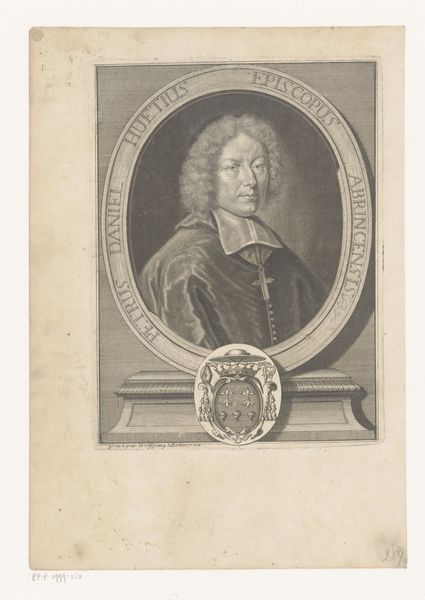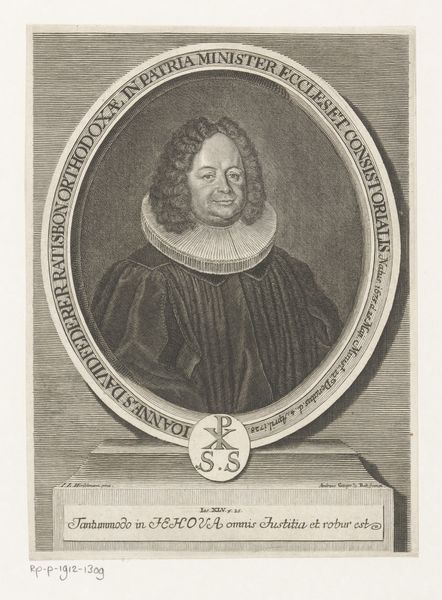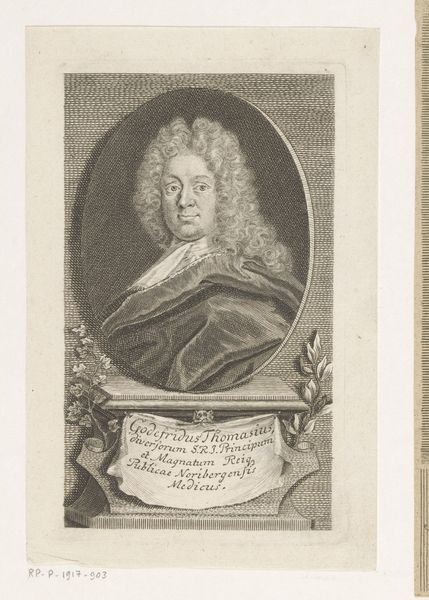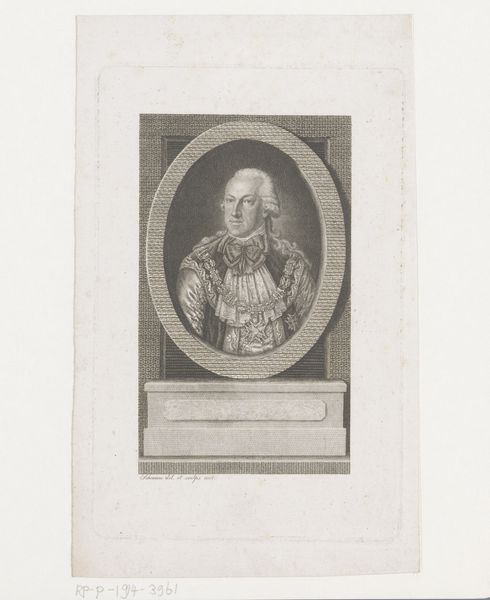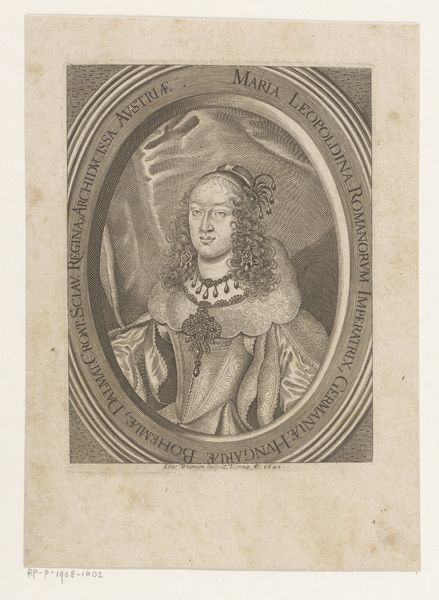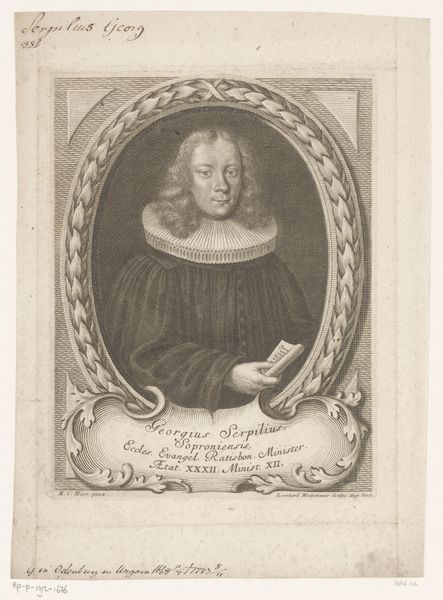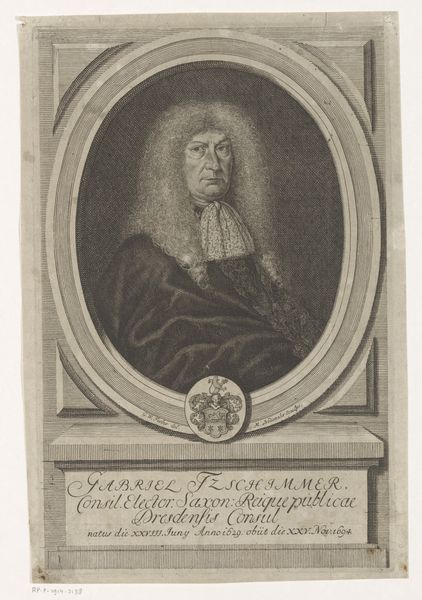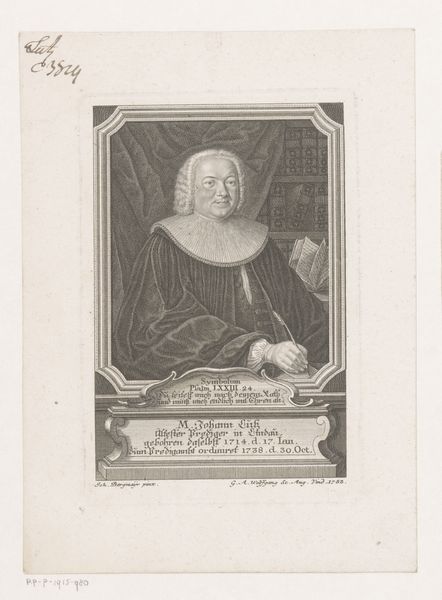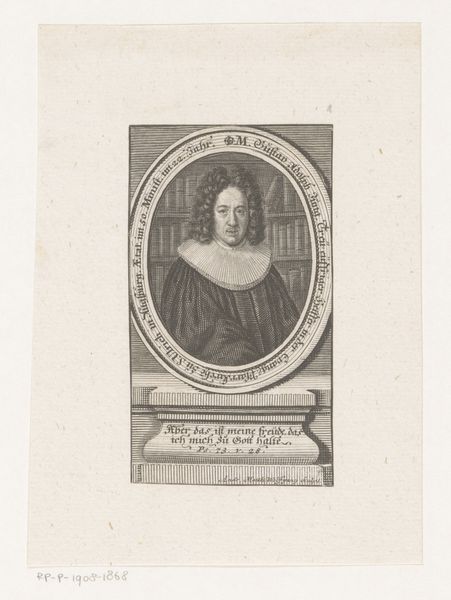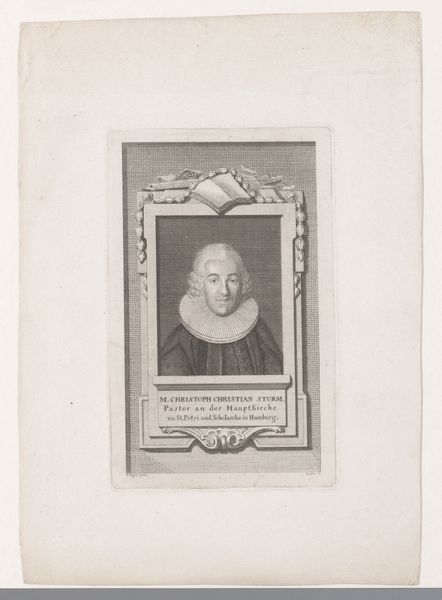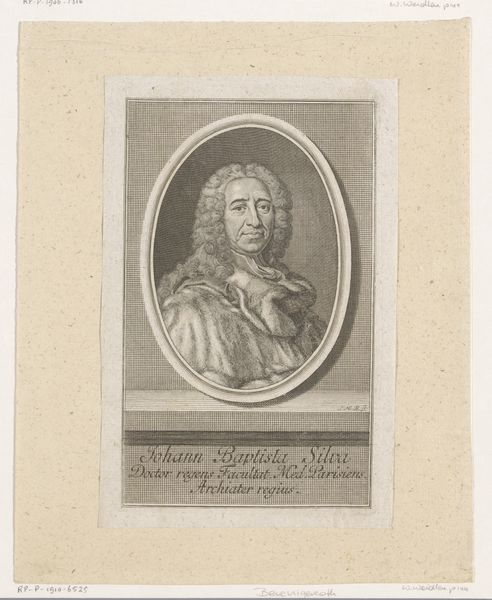
print, engraving
#
portrait
#
baroque
# print
#
old engraving style
#
engraving
Dimensions: height 79 mm, width 47 mm
Copyright: Rijks Museum: Open Domain
Curator: This print, likely created sometime between 1707 and 1737, depicts Gottfried Zäunemann, as indicated by the inscription surrounding the oval portrait. It's by Andreas Matthäus Wolfgang. Editor: The intricate lines of this engraving create such a sense of formality. The sitter's ruffled collar, almost a paper doily quality, contrasts against what feels like a somber tone overall. Curator: Yes, the Baroque style portrait was often a means to solidify social status. These portraits provided access to identities across social and cultural circles, offering tangible markers of reputation through a medium like engraving. It could be reproduced. Editor: And the detail achieved through the engraving process—those meticulous lines suggesting texture in the fabric and skin—highlights the labor involved in production. There's almost a tactile quality, even though it's a print. Curator: Portraits like this would circulate amongst the sitter's networks, of course. This portrait contributes to understanding social and religious networks of the period in the Germanic lands. Note the elaborate framework supporting the oval. It gives the sitter extra stature, a further symbolic elevation. Editor: It also reinforces the commodification of identity at that time. Someone like Zäunemann, invested in circulating their image through these mass produced engravings, shows just how much social currency one's likeness had. Consider the investment involved, the tools, the labor and then the material itself. Curator: A key aspect of Wolfgang’s workshop production involves understanding the networks required for its distribution; as part of an increased culture of image consumption, such workshops capitalized on both popular and elite markets. Editor: So, examining these engravings gives us not only insight into representation but the economic structures sustaining this cultural moment. Thinking about its journey – from the engraver’s workshop to widespread circulation – it's really a glimpse into the cultural landscape of its time. Curator: Precisely. It speaks to the evolving public role of art in society and its connection to socio-political movements and networks of distribution. Editor: Thanks for expanding the scope!
Comments
No comments
Be the first to comment and join the conversation on the ultimate creative platform.
